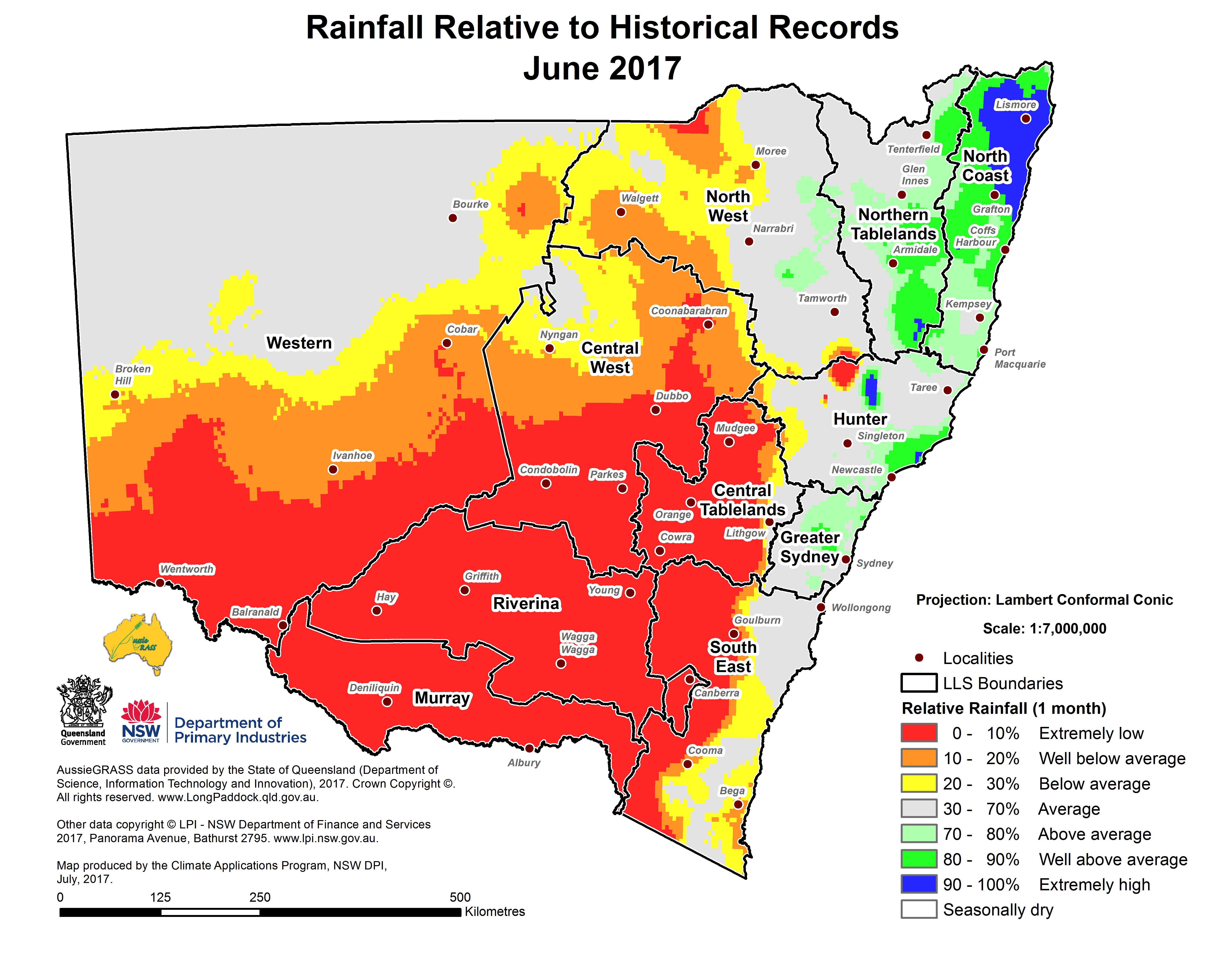
Dry conditions continue across inland NSW
17 Jul 2017

June was a month of contrast with some inland areas of NSW experiencing the driest June rainfall on record, while areas of the far north east received the highest June rainfall on record.
NSW Department of Primary Industries (DPI) Seasonal Conditions Coordinator
Ian McGowen said June was the driest since 2002, with many southern inland areas having the driest June on record.
“Rainfall received was below average across 61 per cent of NSW, with much of southern, western and central inland NSW receiving less than 4-10 mm of rainfall,” Mr McGowen said.
“Above average rainfall occurred across the north east, northern tablelands, Hunter valley, Sydney basin and over areas of the northern slopes and north west plains.
“The rainfall received in late June and early July improved the topsoil moisture across much of northern NSW, the mid-north to north coast and areas of the southern slopes.
“The late June rainfall improved crop prospects across the northern slopes and eastern areas of the north west plains, but light, patchy falls in most other cropping areas did little to improve conditions.
“Topsoil moisture declined across much of southern NSW, the south of the central west and areas of the southern and central tablelands.
“Pasture growth remained limited or declined across most of NSW. Despite the warmer than normal daytime temperatures, a combination of lack of moisture, heavy frosts and grazing pressure restricted pasture growth with annual and native pastures the most affected.
“Stock condition generally remained good, although limited pasture growth in many areas has meant that supplementation was necessary, particularly where forage crops were not available.
Mr McGowen said the dry conditions have affected the establishment of late sown crops, with areas of the central west and north west plains remaining unsown due to the lack of June rainfall.
“Follow up rainfall is urgently needed across inland NSW to promote growth of late sown winter crops,” Mr McGowen said.
“Early sown dual purpose crops continue to perform well, but also require follow up rainfall to aid growth and grazing recovery. The yield prospects for late sown crops have been reduced due to late sowing and emergence, patchy establishment and poor soil moisture.
“Wheat and canola crops sown in late April and early May are handling the dry conditions, but will need rainfall soon to maintain current yield potential.
The Bureau of Meteorology’s rainfall outlook for July to September indicates drier than normal conditions are likely across much of inland NSW, with daytime temperatures likely to be warmer than normal.
The seasonal outlooks have been influenced by the likelihood of higher than normal atmospheric pressure across southern Australia and westerly winds moving further south, leading to fewer cold fronts and low pressure systems and lower levels of cloud across inland NSW.
The Pacific Ocean remains in an ENSO-neutral state, with the outlook from most global climate models suggesting this will continue throughout 2017.
As the dry conditions continue, primary producers are encouraged to visit www.droughthub.nsw.gov.au for information on a vast range of services and support available to prepare for and manage drought conditions.
Media contact: Anne Brook (02) 6763 1163 or 0477 358 305

